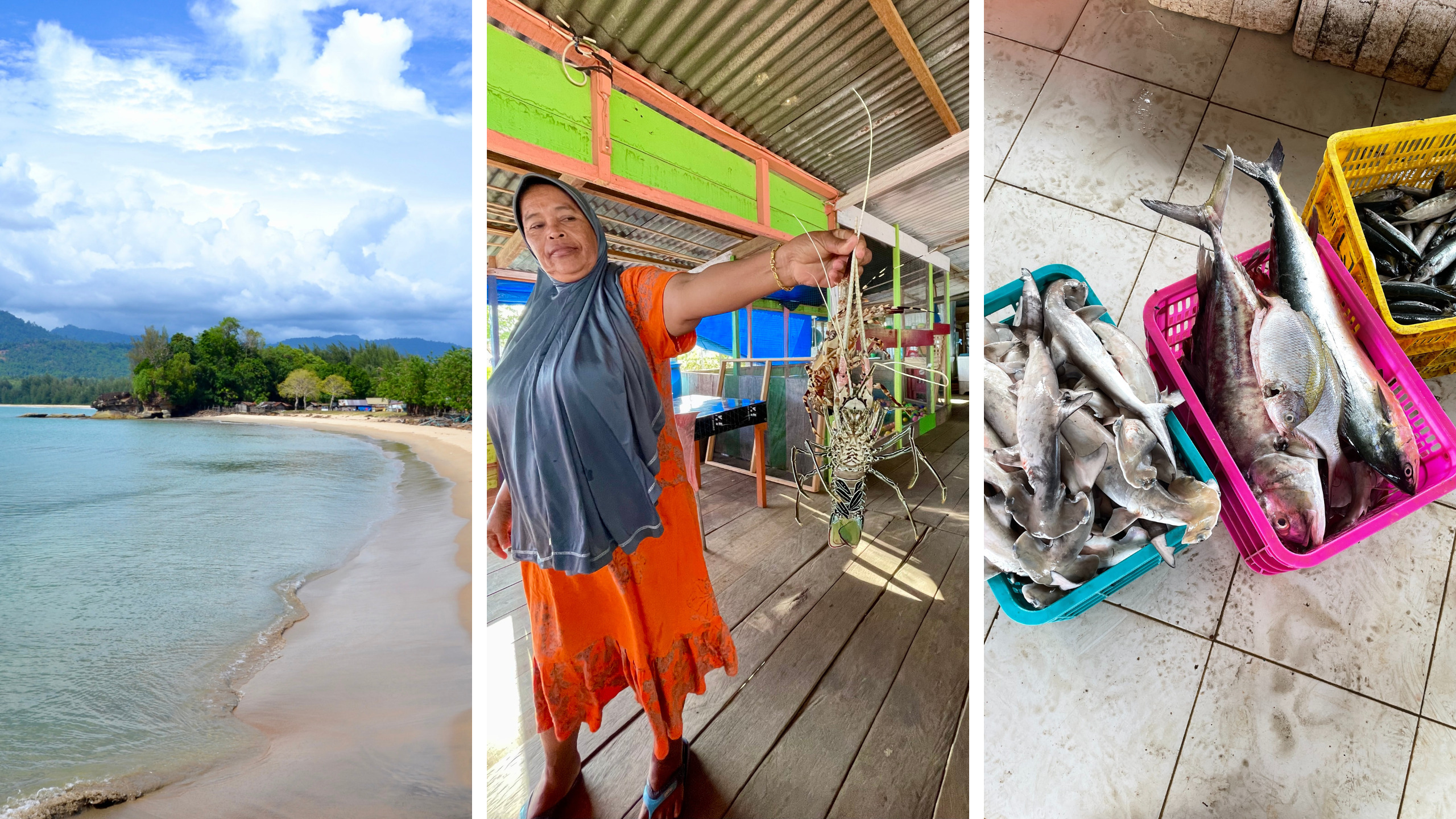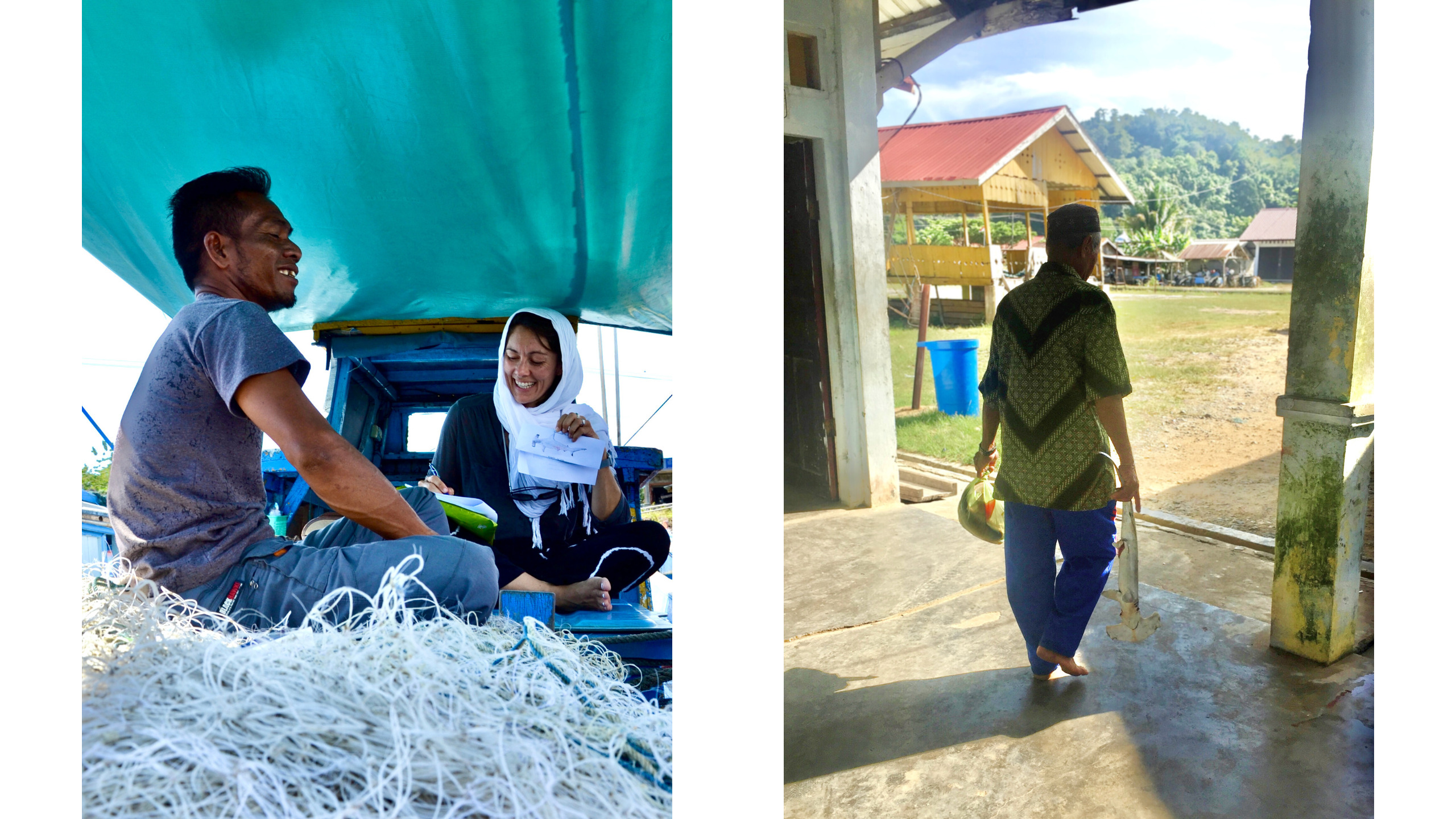Hope for hammerheads
Aceh Jaya, on the southwest coast of Aceh, is an incredibly beautiful part of Indonesia. Sandy beaches and turquoise waters stretch for miles, juxtaposed by lush green hills and mountains. Coastal communities are dotted all along this lush coastline, and every day, hundreds of small-scale fishers head out into the turquoise waters with nets and lines, hoping to catch some food and make a living. They come back with lobsters and small reef and demersal fish to take home and sell in the market.
However, the shallow turquoise waters of Aceh Jaya also happen to be perfect nursery ground habitat for Critically Endangered hammerhead sharks. We know this because every dry season (roughly April to September) hundreds of juvenile hammerheads pile up in the harbor as part of the daily catch.

Photos © Hollie Booth
The ecology and morphology of hammerhead sharks makes them highly vulnerable to capture in fishing nets: they like to hang out where the other fish hang out, and their trademark hammer-shaped head is easily entangled. Hammerhead sharks are also notoriously sensitive to capture in fishing nets. While some shark species can survive for long periods of time after being caught, studies have shown that hammerheads exhibit some of the lowest survivability rates amongst shark species. Moreover, juvenile hammerhead sharks are commonly consumed in traditional shark curry in coastal areas in Aceh. Together, these ecological and socio-economic factors create a perfect storm for overfishing of hammerhead sharks in Aceh Jaya.
Over the last three years, funded by Save Our Seas Foundation, we have been working with fishers in Aceh to understand the socio-economic drivers of shark fishing and design solutions that are good for sharks and good for local communities. Informed by this research, we have been trialing a pay-to-release scheme in Aceh Jaya since May 2022. If fishers submit videos of Critically Endangered species (hammerhead sharks or wedgefish) being safely released from their nets, they receive a small payment which is equivalent to the value they could have otherwise sold them for.

Photos © Hollie Booth
We have had considerable success with wedgefish (a Critically Endangered ‘shark-like ray’) since the trial begin, however we had almost given up with hammerheads. Hardly any fishers had submitted live release videos since the trial began a year ago, and we assumed that they died too quickly for live release to be an option.
However, the onset of this year’s dry season has given us renewed hope. Two fishing captains from Patek village – Pak Nasrol and Pak Darwis – decided to give it a go and have now safely released over 204 juvenile hammerheads just this past fortnight!
Watch more of the team’s releases on their Instagram page
Our team of students and research assistants are heading to Aceh Jaya next week to conduct a regular project review, and they will be chatting with fishers in Patek and understand why and how the scheme has suddenly taken off. We hope other fishers might be inspired by Nasrol and Darwis, and that we can start collecting data on these released individuals to understand more about the breeding patterns and life histories of sharks in this area, so that they can be better protected in the future.
Thank you – teurimong geunaseh – to the Aceh Jaya community, and especially Pak Nasrol and Pak Darwis, for giving us renewed hope for these charismatic and vulnerable species!
